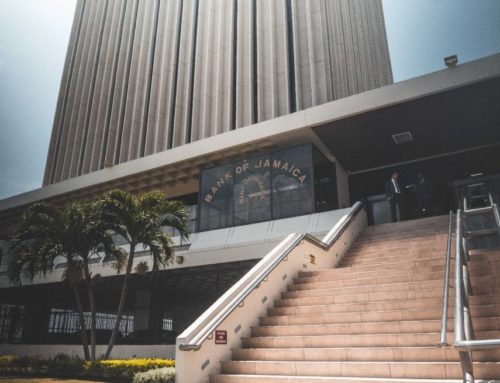Why is China’s economic outlook being downgraded?
They say that when the US sneezes, the Caribbean catches a cold. Well what happens when China sneezes?
Credit ratings agency Fitch just downgraded China’s economic outlook from stable to negative. This is just months after another ratings agency, Moody’s, did the same thing. That’s two of the top three global rating agencies downgrading the outlook for the world’s second-largest economy’ to negative.
So, what does this mean?
Now first of all, don’t confuse economic outlook with credit rating. Fitch’s credit rating for China is still an A plus, which is among their highest ratings. Yes, you can have a rating higher than A+. Fitch’s highest rating is AAA+. The United States is rated AA+ with a stable outlook.
Here’s what that means. The credit rating is how well the agency thinks the country is managing its debt now. And the outlook is how they think the country will manage its debt in the future. Lowering China’s outlook from stable to negative does not automatically mean that Fitch will downgrade their creditworthiness, but it does increase those chances.
So what happened? Why the downgrade?
According to Fitch, there is growing uncertainty in China’s economy as the country moves away from relying so heavily on an industrial economic model to a more consumer-based spending one.
We’ve talked about how more Chinese companies have been getting into the electric vehicle market, plus Apple has been shifting its iPhone production to India over the past year.
The Chinese government is looking for more sustainable growth avenues. But according to Fitch and Moody’s, this creates a lot of uncertainty.
In Fitch’s report, they predicted that the general government financial deficit will rise to just over 7% of GDP this year. Meaning China will be spending 7% more than what the country earns by the end of the year.
Yikes! How can that be? China is the factory of the world! They should be rolling in money!
Well, in addition to this economic transition, you also have to remember that China was ground zero for COVID-19. They had some of the strictest pandemic restrictions that also lasted much longer than most countries. China only reopened its borders in January 2023.
That slowed down economic growth massively! Plus Moody’s noted in December that China’s ‘weaker demographic’ poses an issue.
Remember that from 1979 to 2015 China had a “one child policy”. This was meant to control the country’s population. Human rights controversies aside, the policy worked and reportedly prevented around 400 million births. China even fell from being the most populated country on Earth. India surpassed China last year.
The only problem is that China now has an ageing population and a low birth rate, which brings problems for the country’s productivity rate. Moody’s said it expects a 3.5% drop in economic growth by 2030 from this issue alone.
So what does that mean for us in this part of the world? Well, with a nickname like “factory of the world”, China’s economic issues could mean a lot of things for us.
China plays a huge role in the global supply chain. Businesses from every industry source their raw materials from China. Trouble there could mean difficulty sourcing raw materials, and you know scarcity drives up prices. Not to mention manufacturing and shipping delays, as well as stalled projects.
And as the world’s second-largest economy, a slowdown in China could have massive ramifications for the global economy.
For right now, China’s government says they have a handle on things. They haven’t abandoned their industrial side. Factory output and retail sales for January and February topped several forecasts. So the government is “finding their feet”.
And that’s the bottom line.
Ask The Analysts
The Cast David Rose Business Writer, Observer Leovaughni Dillion Investment Research & Sovereign Risk Analyst at JMMB Group
R.A. Williams to list on JSE
The Cast Audley Reid CEO R.A. Williams Distributors Julian Morrison Founder, Wealth Watch JA











Leave A Comment